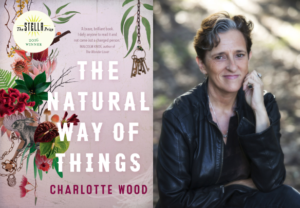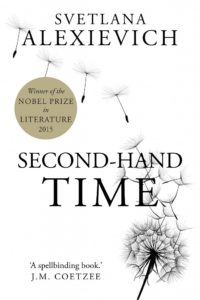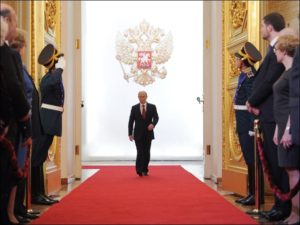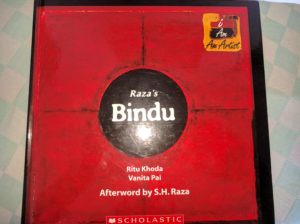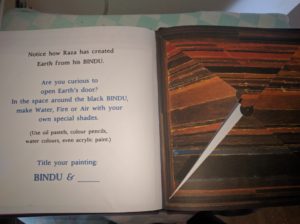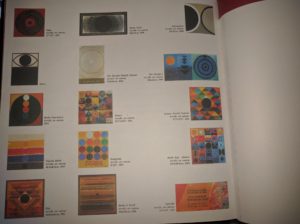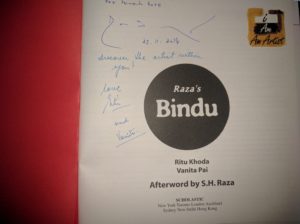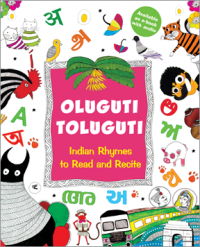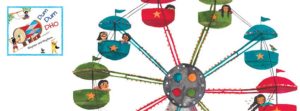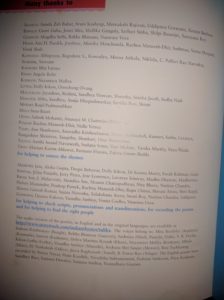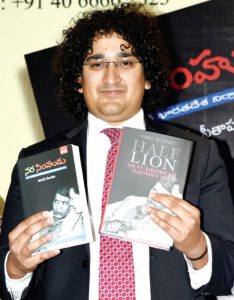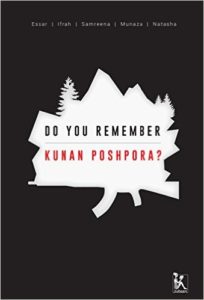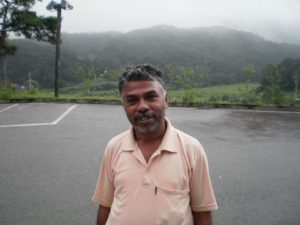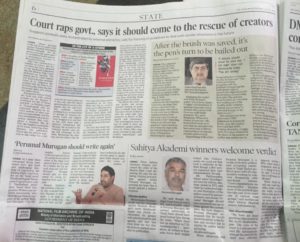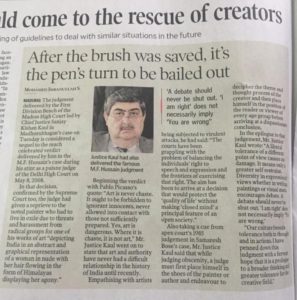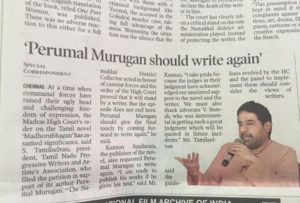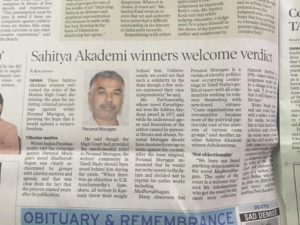Tamil author Perumal Murugan stands tall, Bookwitty

Last July the Madras High Court made a landmark judgement about a book that was under threat of censorship. This had led to its author leaving his home and ceasing to write. At the judgement, Chief Justice Sanjay Kishen Kaul stated: “the choice to read is always with the reader. If you do not like a book, throw it away. There is no compulsion to read a book…the right to write is unhindered.” Using Biblical imagery he continued: “Let the author be resurrected for what he is best at, to write.”
It was the end of a two-year trial that was a sobering reminder of how easy it is to conduct a witch-hunt in modern times.
The author in question is the award-winning Perumal Murugan and the book is Madhorubhagan or One Part Woman, ( published by Kalachuvadu) set about a century ago in Tiruchengode, in the southern Indian state of Tamil Nadu. Murugan, a teacher at the local government college, has a doctorate in Tamil Literature and is a highly respected chronicler on the Kongu region. One Part Woman is the story about Kali and Ponna, a childless peasant couple. It is an open secret that families on both sides are encouraging Kali to marry a second time, an idea he is deeply unhappy about. Meanwhile Ponna is persuaded by her family to participate in the Vaikasi Visakam chariot festival misleading her into believing that Kali would approve.
When the English translation by Anirrudhan Vasudevan was published, a growing buzz ensued because the crux of the novel focuses on a local practice that allowed for childless couples to participate in a carnivalesque gathering and on the 14th night have consensual sex with anyone under the cover of darkness. Children conceived on this night were considered to besami kodutha pillai or God-given children. This ancient tradition apparently had social sanction.
Ironically, the backlash against the novel began four years after it had been published in Tamil, demonstrating the impact a translation can make. It was the publication of the English edition that concerned the petitioners more for “a foreigner or people from other places who read this novelized history get a wrong notion that Tamil culture is lascivious and that a sexual orgy festival as portrayed in fact takes place in Arthanareeswarar Temple. The novel is thus alleged to be offensive and scandalous, and unless curtailed, would lead future generations to think that the events narrated in the novel are true.”
In late 2014 Murugan had just returned from a literary retreat in Bangalore where he had gone to work on the sequels to One Part Woman. A nightmare was to begin for him: abusive anonymous callers harassed him over the phone, accusing him of being a Christian, anti-Hindu, and anti-Kongu Vellar. A few days later, copies of One Part Woman were burned. Despite lodging a complaint with the police on the night of the book-burning incident, no action was taken. Muragan even issued a long clarification the next day explaining his art and promising to revise his text in all future editions and to scrub out all references to Tiruchengode.
But Hindu fundamentalists remained furious, arguing that Tiruchengode is a historical temple town and that writing about real places “relating it with unreal sexual orgy” is disrespectful to women, suggesting they are prostitutes. A ban of the novel was thus sought on three primary grounds: obscenity, defamation, and that it was derogatory and hurtful to the religious sentiments of the Hindus. A court case was filed against the author. Murugan fled with his family to Madras from where he issued his now famous “obituary”.
The case was then fought for more than a year in the Madras High Court.
The recent Madras High Court judgement also documents how the hate campaign against Murugan included circulating eight pages extracted from the novel without any context. Furthermore, it lists sufficient literary evidence to prove many elements of One Part Woman are based upon folklore and older.
After the case was ruled in his favour, Murugan applied for a transfer back to the college where he had been teaching. And within three weeks his short story, Neer Vilayattu (The Well), newly translated by N Kalyan Raman was released for free by Juggernaut Books on their app.

Of the outcome, journalist and Chair of Writers in Prison Committee, PEN International, Salil Tripathi concluded: “The judgment is terrific in stating clearly what common sense should have dictated all along. This isn’t surprising; after all Sanjay Kishen Kaul had written the wonderful judgment defending the late M.F. Husain’s right to paint. That judgment, and this, together are part of India’s jurisprudence defending the right of any creative person to imagine and create art. After all, art challenges our thinking and may even offend; the way to deal with it is to respond by countering it through argument, through expression (and not violence or intimidation), and even by choosing to avoid seeing it or reading that book. What Husain experienced in his last years was tragic; it is good that Perumal Murugan has received justice – it is now for the state to defend his right to express himself freely.”
Perumal Murugan’s large-hearted response to the judgement was “I will get up. It is just that my mind wishes to spend a little time in the joy of this moment. My thanks to friends who stood by me. My thanks also to friends who stood against me.”
***
Here are what some of the eminent academics, lawyers, historians and journalists I spoke to said. The following quotes could not be accommodated in the original article but I have reproduced them for their significance.
Emeritus Professor of History at the Jawaharlal Nehru University, a Fellow of the British Academy and a recipient of the prestigious Kluge Prize of the US Library of Congress, Romila Thapar said “It was a good judgement in support of the right to freedom of expression for writers. It can also be quoted as a precedent in future cases involving attempts to silence writers. As has been pointed out by others, we as citizens must also create public opinion in support of free speech and not leave its defence only to the judiciary.
Prof Venkatachalapathy wrote“… it’s also worrying how everything hinges on the judge. A reactionary judge could have, in the same legal language, upheld all the charges against Perumal Murugan.” He went on to caution that non-state actors who enforce censorship do not respect such judgement so “while such judgments strengthen democratic and liberal forces we need to keep vigil.”
Lawrence Liang adds:

